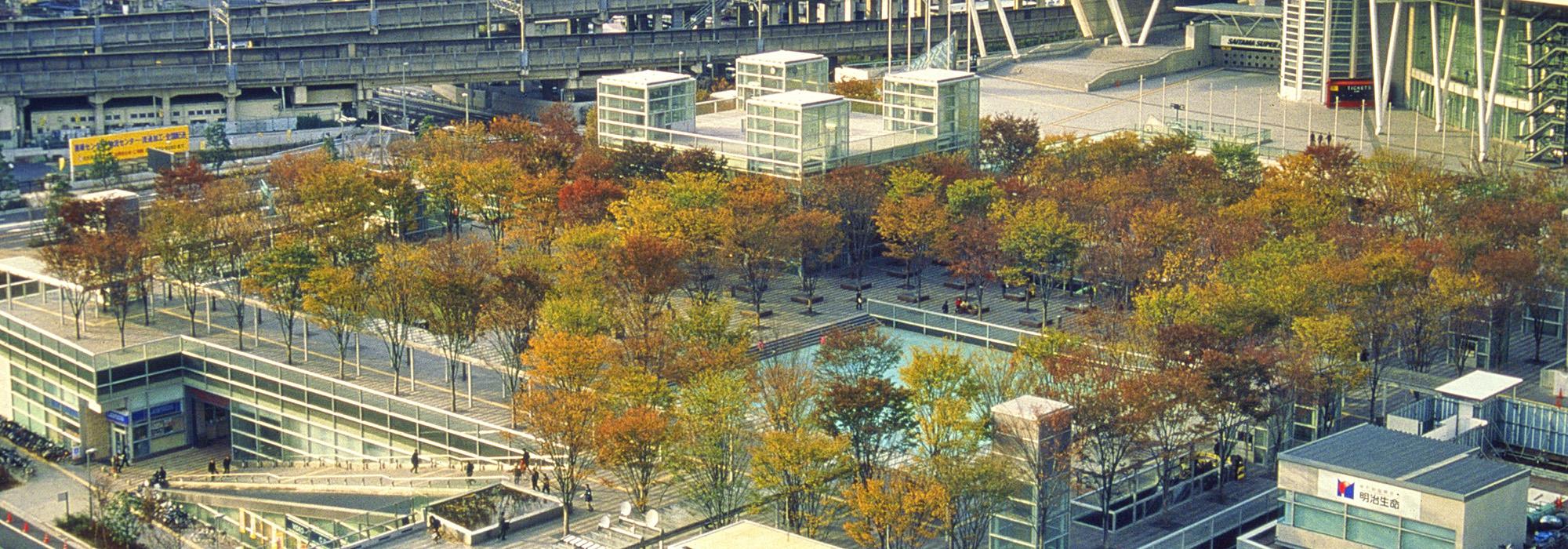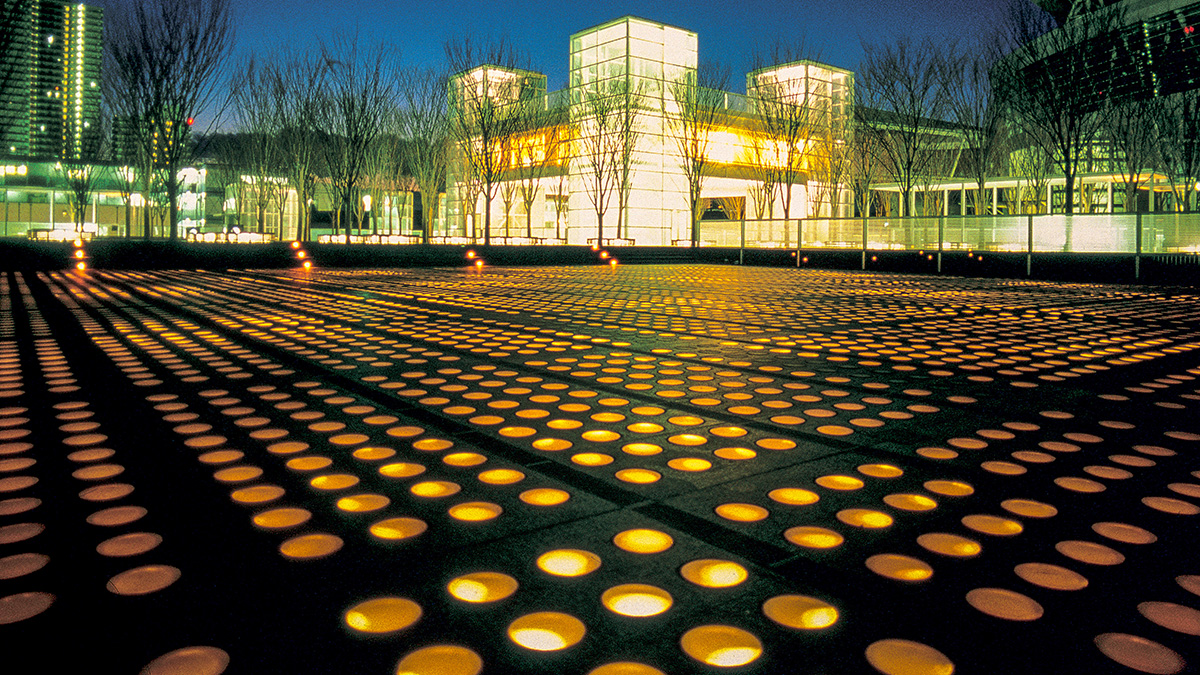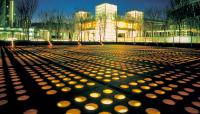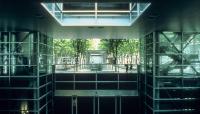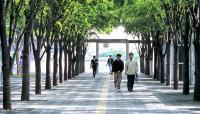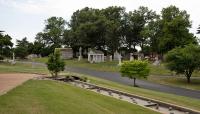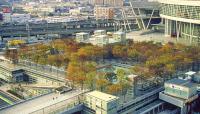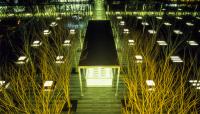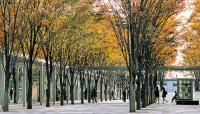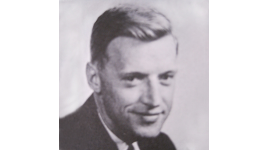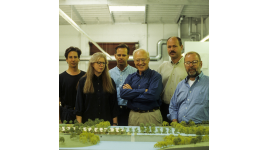Landscape Information
This 2.5-acre elevated site is located within a suburban area of greater Tokyo, ten miles north of the city’s center. It sits amidst a historic transportation corridor along the Arakawa River, connecting Tokyo Bay with areas to the north. Peter Walker William Johnson and Partners submitted the design to an international competition sponsored by the prefectural government in 1994, as a component of a new urban center for the capital city of Saitama Prefecture. The plaza’s design provides pedestrian connectivity between a sports arena to the north, a commuter train line to the east, high-rise development to the south, and high-speed rail and commercial rail lines to the west.
Sitting two-stories above street level, atop a shopping center, the pedestrian space is constructed of metal and glass paving. It features a grid of 220 zelkova trees, with water features, play areas, seating, and exhibition spaces interspersed throughout. Employing a unique structural system with specially-designed paving, soil beds for plantings, and a drainage collection system, the glass pavers allow light to filter up from the retail space at night, illuminating the plaza from below, while allowing sunlight into the shopping area during the day. During the winter months, portions of the Plaza can be flooded to form an ice rink. Taken together, many of the design’s elements provide opportunities for public gathering in an area not previously thought of as a destination.
The parkland surrounding the nearby Hikawa Shrine was an important source of inspiration for the plaza. The zelkova trees that were introduced not only provide a shaded canopy during the summer months, but serve as a reminder of the region’s ever-diminishing forests. The design was completed in 2000.



